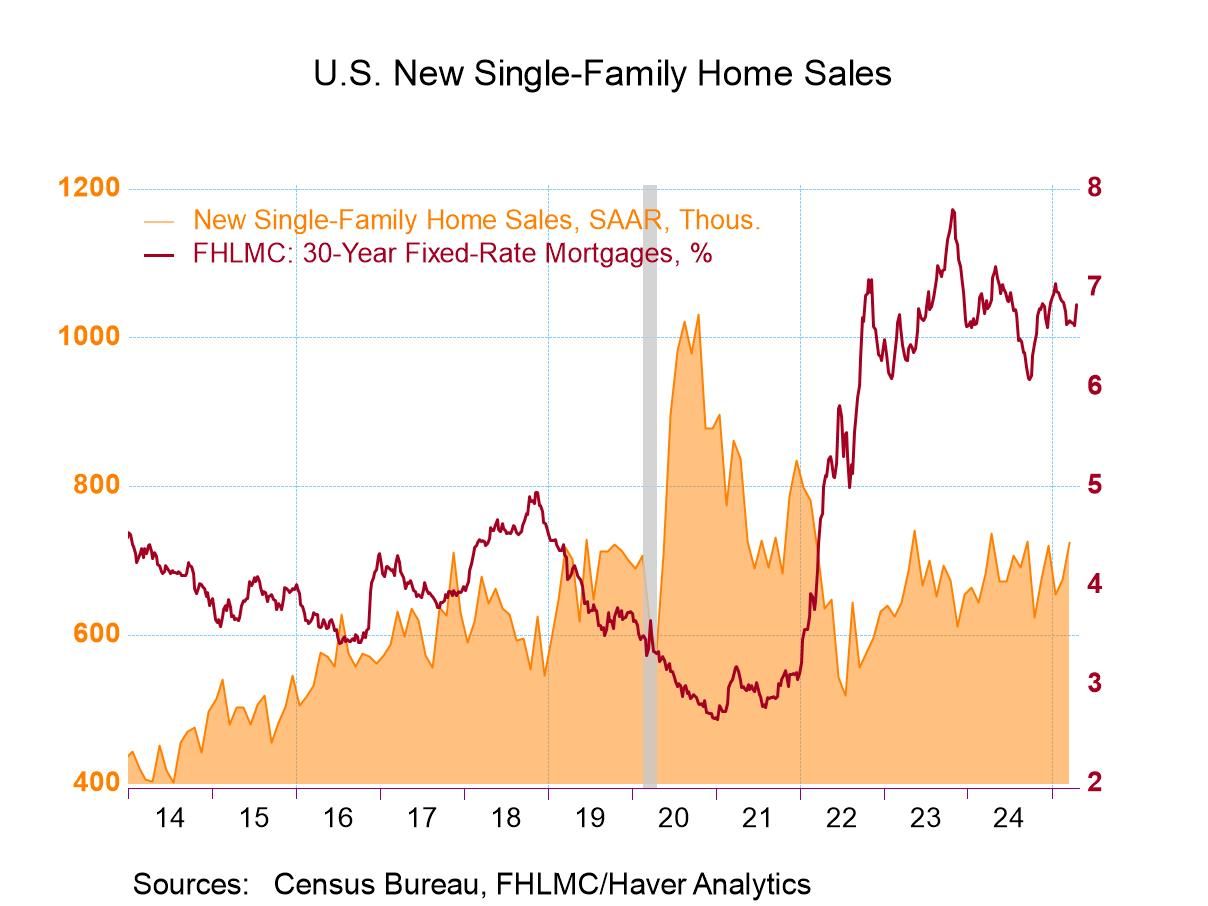U.S. Philly Fed Index Surprises to Upside in March
by:Sandy Batten
|in:Economy in Brief
Summary
- Broad-based increases in component indexes.
- Delivery times index surges after three monthly declines.
- Prices paid rise to highest since 1979.


The Federal Reserve Bank of Philadelphia's Manufacturing Business Conditions Index surprised market expectations in March, rebounding to 27.4, its highest reading in four months, from 16.0 in February. The Action Economics Forecast Survey looked for an unchanged reading of 16.0. The percentage of firms reporting improved conditions jumped up to 40.2%, the highest reading in four months, from 26.3% in February, while the share reporting weaker conditions increased to 12.7% from 10.3%. Responses to this month's survey were collected from March 7 through March 14, that is, after the Russian invasion of Ukraine.
The headline index reflects responses to a single question. Haver Analytics calculates an ISM-Adjusted General Business Conditions Index from five key components using the same methodology as the national ISM index. That figure rose to 61.4 in March from 58.5 in February, indicating a rather broadly based improvement in March.
Performance of the subindexes was almost universally stronger this month. The new orders index rose to 25.8 from 14.2 in February. The shipments index jumped up to 30.4 from 13.4 in February. The delivery times index soared to 39.7, its highest reading since May 2021, after having declined in each of the preceding three months. Nearly 46% of respondents reported longer delivery ties, up from 33% in February, while only 6% reported shorter delivery times, down from 10% in February. Inventories was the only subindex to decline in March, falling to 0.5 from 4.0 in February.
The employment subindexes pointed to further strengthening of labor-market conditions. The number of employees index rose to a new record of 38.9 from 32.3 in February The average workweek reading jumped up to 21.4 from 10.8 in February.
Inflation pressures also remained intact. The prices paid reading jumped up to 81.0 in March, the highest reading since June 1979, from 69.3 in February. Just over 87% of respondents reported paying higher prices for inputs while only 6.2% reported paying lower prices. These higher input prices are being passed through to higher output prices. The prices received index increased to 54.4 in March, the second highest reading since the mid-1970s, from 49.8 in February.
The Philadelphia Fed also surveys expectations for business activity in the coming six months. In contrast to the increase in the current conditions index, the expectations index for future activity eased to 22.7 in March from 28.1 in February. The decline in March was led by expected weaker new orders and shipments. Delivery times are expected to shorten while input prices are expected to continue to rise markedly.
In special questions asked in this survey, problems in energy markets and with supply chains replaced Covid as the major factors expected to restrain production over the coming three months.
The survey panel consists of 150 manufacturing companies in the third Federal Reserve District (which consists of southeastern Pennsylvania, southern New Jersey and Delaware). The diffusion indexes represent the percentage of respondents indicating an increase minus the percentage indicating a decrease in activity. The ISM-adjusted figure, calculated by Haver Analytics, is the average of five diffusion indexes: new orders, shipments, employment, delivery times and inventories with equal weights (20% each). Each ISM-adjusted index is the sum of the percent responding "higher" and one-half of the percent responding "no change."
The figures from the Philadelphia Federal Reserve dating back to 1968 can be found in Haver's SURVEYS database. The expectation from the Action Economics Forecast Survey is available in AS1REPNA.


Sandy Batten
AuthorMore in Author Profile »Sandy Batten has more than 30 years of experience analyzing industrial economies and financial markets and a wide range of experience across the financial services sector, government, and academia. Before joining Haver Analytics, Sandy was a Vice President and Senior Economist at Citibank; Senior Credit Market Analyst at CDC Investment Management, Managing Director at Bear Stearns, and Executive Director at JPMorgan. In 2008, Sandy was named the most accurate US forecaster by the National Association for Business Economics. He is a member of the New York Forecasters Club, NABE, and the American Economic Association. Prior to his time in the financial services sector, Sandy was a Research Officer at the Federal Reserve Bank of St. Louis, Senior Staff Economist on the President’s Council of Economic Advisors, Deputy Assistant Secretary for Economic Policy at the US Treasury, and Economist at the International Monetary Fund. Sandy has taught economics at St. Louis University, Denison University, and Muskingun College. He has published numerous peer-reviewed articles in a wide range of academic publications. He has a B.A. in economics from the University of Richmond and a M.A. and Ph.D. in economics from The Ohio State University.






